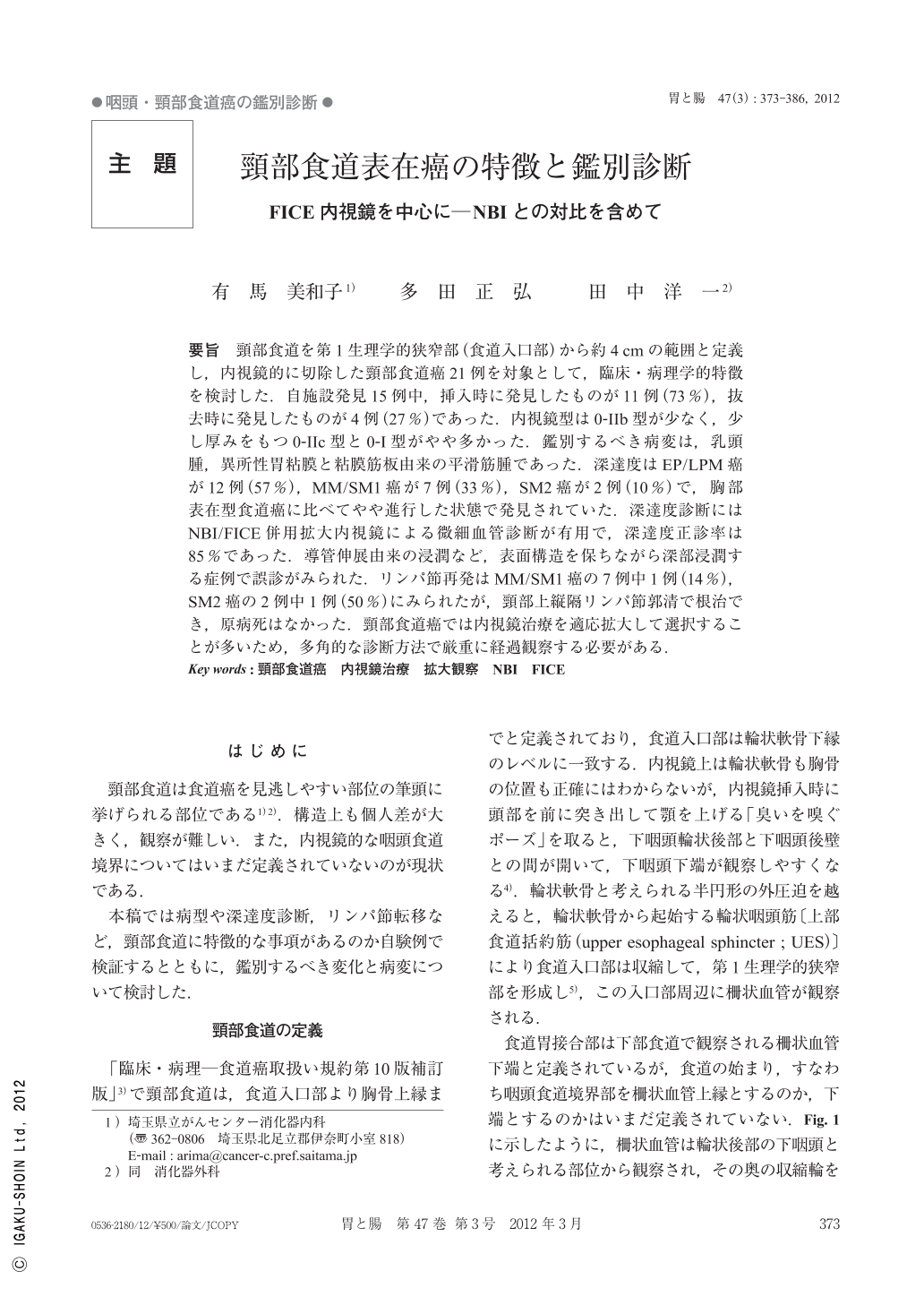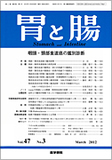Japanese
English
- 有料閲覧
- Abstract 文献概要
- 1ページ目 Look Inside
- 参考文献 Reference
- サイト内被引用 Cited by
要旨 頸部食道を第1生理学的狭窄部(食道入口部)から約4cmの範囲と定義し,内視鏡的に切除した頸部食道癌21例を対象として,臨床・病理学的特徴を検討した.自施設発見15例中,挿入時に発見したものが11例(73%),抜去時に発見したものが4例(27%)であった.内視鏡型は0-IIb型が少なく,少し厚みをもつ0-IIc型と0-I型がやや多かった.鑑別するべき病変は,乳頭腫,異所性胃粘膜と粘膜筋板由来の平滑筋腫であった.深達度はEP/LPM癌が12例(57%),MM/SM1癌が7例(33%),SM2癌が2例(10%)で,胸部表在型食道癌に比べてやや進行した状態で発見されていた.深達度診断にはNBI/FICE併用拡大内視鏡による微細血管診断が有用で,深達度正診率は85%であった.導管伸展由来の浸潤など,表面構造を保ちながら深部浸潤する症例で誤診がみられた.リンパ節再発はMM/SM1癌の7例中1例(14%),SM2癌の2例中1例(50%)にみられたが,頸部上縦隔リンパ節郭清で根治でき,原病死はなかった.頸部食道癌では内視鏡治療を適応拡大して選択することが多いため,多角的な診断方法で厳重に経過観察する必要がある.
The cervical esophagus was defined as the region about 4cm from the first physiological stricture of the esophagus(i.e., the esophageal orifice). We studied clinical and histopathological characteristics of 21 patients with endoscopically resected cancer of the cervical esophagus. Disease was detected at our hospital in 15 patients, 11(73%)at the time of scope insertion and 4(27%)at the time of scope removal. The endoscopic type was type 0-IIc and type 0-I with slight thickening in a high proportion of patients, with relatively few cases of type 0-IIb. Lesions that should be distinguished from cervical esophageal cancer were papilloma and ectopic gastric mucosa and leiomyoma arising from lamina muscularis mucosae. The depth of tumor invasion was estimated to be the EP or LPM in 12 patients(57%), the MM or SM1 in 7(33%), and the SM2 in 2(10%). Tumors were slightly more advanced than superficial cancer of the thoracic esophagus. Microvascular diagnosis combined with NBI or FICE was useful for assessing the depth of invasion, with a diagnostic accuracy rate of 85%. Misdiagnosis occurred in patients who had deep tumor invasion associated with factors such as ductal extension, while preserving the superficial structure. Lymph-node recurrence occurred in 1(14%)of 7 patients with MM or SM1 cancer and 1(50%)of 2 patients with SM2 cancer, but could be curatively treated by upper mediastinal lymph-node dissection. No patient died of their disease. Since the indications for endoscopic treatment are often broadened to include cancer of the cervical esophagus, the use of multiple diagnostic methods and close follow-up after treatment are mandatory.

Copyright © 2012, Igaku-Shoin Ltd. All rights reserved.


